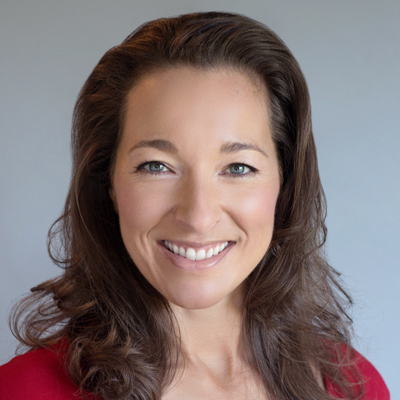
Laura Clydesdale
Contributor
I took a deep breath and braced myself…I might have even said a little prayer.
It was time to help my daughter make a mistake. Maybe even fail a little.
A few posts ago, inspired by the discovery of my daughter doing homework at 2:00 am, I discussed how trying to be perpetually perfect can impact a girl’s leadership potential and her sense of self. Women Pay the Price for Perfection. Don’t Let Your Daughter be Little-Miss-Perfect.
Therefore, I knew my perfectionist daughter needed to take more risks and make more mistakes, but here was the irony: was I willing to let her?
I offer an imaginary conversation in the grocery store check-out line to illustrate my dilemma:
Jane: “Hi Jill! Long time, no see.”
Jill: “Oh, hi, Jane. How are you? It’s been ages! How is your daughter, Sophie, doing?”
Jane: “I’m so darn proud of her! She just got on the state soccer team, she placed 2nd in the school spelling bee and has been on the honor roll for the last 4 semesters. How’s your Maggie doing? It seems like she was just two-years-old yesterday!”
Jill: “I’m proud of my daughter, too! She raised her hand the other day when she wasn’t 100% sure, got the problem wrong and wasn’t shattered by it. She just got an 85% on an English test, took it in stride and didn’t even cry. Oh, and last week she did something mean to a friend, recognized her mistake and apologized first! Can you believe it?!”
Crickets…

Photograph via Mickey O’neil
I’m obviously exaggerating here, but I know that you know exactly what I’m talking about.
When I was growing up, we had the “Keeping Up With the Joneses” phenomenon. It was all about the stuff you had. Now it seems like our generation is trying to one-up the Boomers with “Look at all the stuff my kid can do.”
If our kids are perfect, then we are perfect parents, right?
Look, I know we just naturally want to protect our children. Letting her fail or make mistakes feels scary!
To us.
To me!
Madeline Levine, a psychologist, and author of Teach Your Children Well, acknowledges that letting your child fail and make mistakes is one of the greatest challenges to being a parent.
Levine says the irony is that “The central task of growing up is to develop a sense of self that is autonomous, confident and generally in accord with reality.” I’d say that our over-bearing, controlling, achievement-focused parenting style is in direct conflict with this goal.
Now, you certainly aren’t going to encourage them to go out and start doing drugs or having unprotected sex!
There are good risks and unhealthy risks.
We needed to start small. Maybe letting her ride her bike to a friend’s house on her own, or go to the mall with a friend…by themselves?
Levine says, “She may forget a package, overpay for an item, or forget that she was supposed to call home at noon. Mastery of the world is an expanding geography for our kids, for toddlers, it’s the backyard; for preteens, the neighborhood, for teens the wider world. But it is in the small daily risks — the taller slide, the bike ride around the block, the invitation extended to a new classmate — that growth takes place. In this gray area of just beyond the comfortable is where resilience is born.”
Together, we make a plan to fail.
(Yes, I’m fully aware of how helicopt-ery this sounds.)
Armed with the wise, risk-taking-resource, Rachel Simmons’ Curse of the Good Girl, I girded my loins and sat down with my daughter to find out what, exactly, she finds risky.
Simmons instructs my daughter to start with the following lists which focus on two common risk themes: 1.) The ability to engage in debate and 2.) the ability to make mistakes.
CONFLICT RISK
- Approaching someone and initiating a conversation
- Expressing yourself under pressure
- Asking for what you need
- Telling someone how you feel
- Refusing to continue an unsafe conversation (walking away, hanging up, signing off)
- Being the first to apologize
SPORTS RISK
- Communication on the field and on the sidelines – asking for help, telling someone where to be or what to do
- Getting things out in the open and trusting your teammates
- Appearing strong, skilled, and in control
Photograph via Mickey O’neil

PERFORMANCE RISK
- Willingness to make a mistake
- Resilience in failure
- Willingness to take on more difficult projects even with the risk of failure
- Taking a stand
- Sharing an opinion
- Asking for help
For my daughter, apparently, the risk was “being first up to the board” at school. “I’d never do that!” she said.
“Um. OK.” I replied.
Her comfort zone was to go second or third even when she knew the answer.
Her risk zone was to go first, even if she was pretty sure she knew the answer.
Her danger zone was going first if she was even slightly unsure of her answer.
Simmons instructs us to set goals on how to gain experience in the risk zone. The premise being that once she starts to dabble in the risk zone, discovers that the downside isn’t so great and that the upsides might be pretty awesome, the risk zone will start to feel more like a comfort zone.
In other words, she’ll grow.
My daughter said that she would try to start going to the board first, 2-3 times a week “but only when I’m 100% sure.”
Well…It was a start.
A few weeks later I followed up. “Did you take any risks today?”
Her answer wasn’t what I expected.
“Yes, I asked some boys at recess if I could join their soccer game.” She explained that her guy friends from her class welcomed her but, unfortunately, not knowing all the boys, she confused who was on her team and accidentally took the ball away from her teammate.
The unfamiliar boys turned on her and not only criticized her play, but blamed the error on the fact that she was a girl.
They made her cry.
Why did she do this?! What happened to going “first to the board”? Jumping into an all-boy soccer game was outside the plan! We hadn’t made contingencies for this risk taking. We hadn’t created a goal. We didn’t address how things could backfire, how she could be hurt or how she should handle a bad result.
For goodness sake…we didn’t role-play!
“What are you going to do?” I asked nervously.
“Maybe I’ll try to play again sometime to prove them wrong. I’m pretty good, you know.”
I knew.
Laura Clydesdale had an epiphany one day when she noticed her then 10-year-old daughter exhibiting some of the same career-derailing traits as many of her female clients. Did it really start this early, she wondered? Laura decided to leverage her 15 years of experience as a leadership development consultant to delve deep into the world of girls’ leadership. Laura started her blog Lead Up to chronicle the journey she was taking with her daughter. Laura’s early history in finance and auditing for both General Electric and the Gap, Inc. compels her to conduct extensive research and seek fact-based solutions for the topics she tackles. However, Laura is unique in that her persuasive points are always woven together with an irresistible human element to create her unique stories.
Laura lives in Berkeley, CA with her husband and two children where she also enjoys sinking her teeth into big philanthropic projects that make a commensurately big impact like Notes & Words and TEDxYouth@EB.
For more posts by Laura Clydesdale visit her blog here.
You can follow her on Twitter at @l_clydesdale and can be contacted at laura(at)lauraclydesdale.com.






